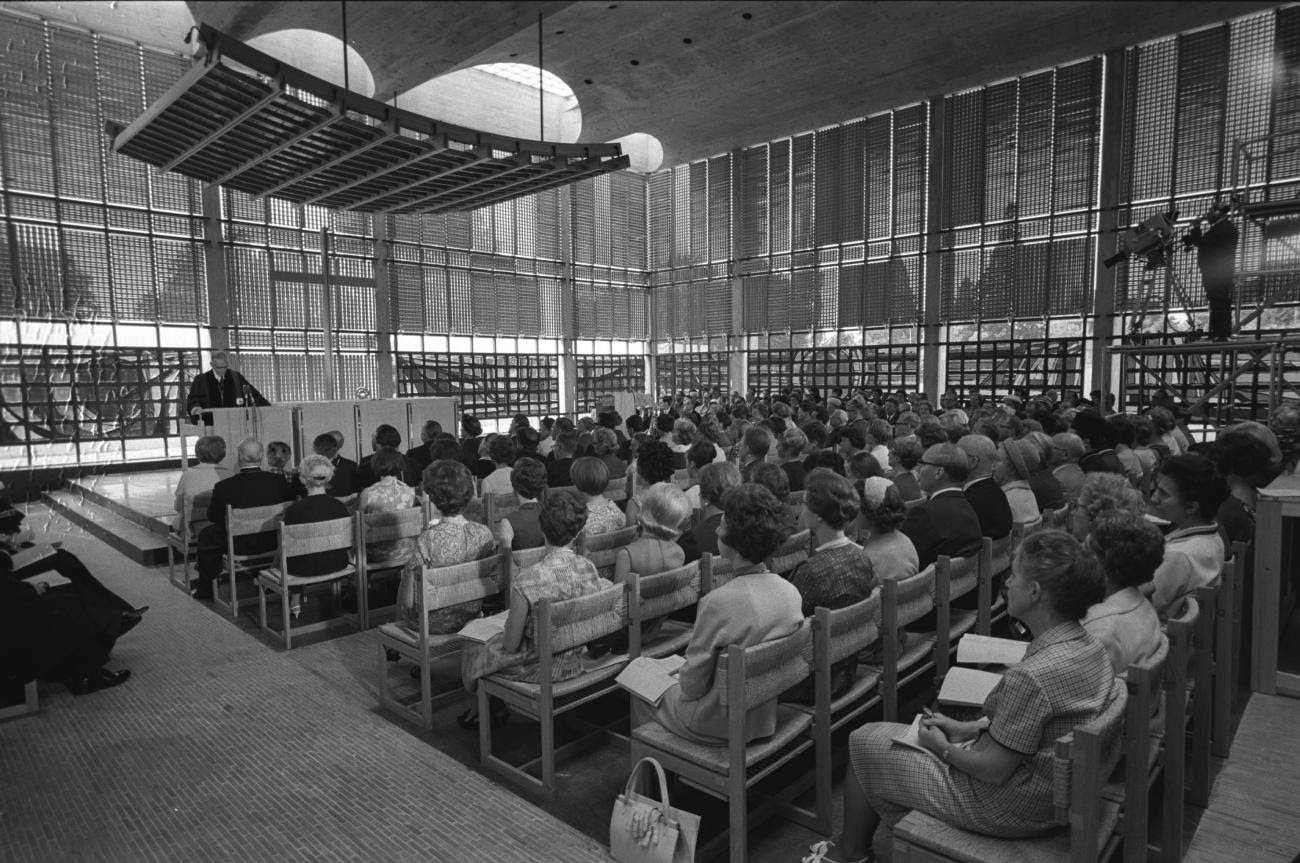As WCC director of Communication Marianne Ejdersten described: “The walls are whispering.” She added “I take always a moment to pray in the chapel and thinking of all the churches worldwide praying and working together for unity, justice and peace.” The music coming from the chapel was the first thing that caught the attention of Beth Ferris, who arrived at the Ecumenical Centre in 1985, ready to take up her new position as study and interpretation secretary for work related to the Refugee Service. “The music that was different from the US hymns I was used to,” she said. “I poked my head in and realized people were singing in a language that was strange to me. ‘Wow,’ I thought, ‘this is going to be a different working environment than I’ve been used to.’ And of course, that initial impression turned out to be right.” For Simon Oxley, who worked at the WCC from 1996-2008 as the WCC executive secretary for Education, the chapel was a physical symbol that the WCC is more than just another international organisation serving global networks. “Whatever else I did as a staff member, participating in worship there remained significant,” he said. Prayers and inclusivity Dr Marcelo Schneider, a WCC programme executive for communication and church relations based in Brazil, has developed a tradition over the years as he visits the chapel. “Whenever I come to Geneva, I go to the chapel and say a little prayer when I arrive, and I do the same when I leave,” he said. The chapel is a place that also symbolized a caring, inclusive community, reflected Evelyn V. Appiah, who worked in the Sub-unit on Renewal and Congregation Life, Lay Participation Towards Inclusive Community, and Lay Centres, Academies, and Movements for Social Concern. “Worshipping and praying together in the beautiful chapel, using materials collected from churches, and monastic communities around the world, was impressive,” she remembered. “Monday service was well-attended to start the week.” Ivars Kupcis, a communication officer, will always remember hot August days, when the expanding and contracting wood in the chapel makes soft cracking noises. “There would always be a gentle wind because of temperature differences—the kind of wind you could feel,” he said. “You feel it almost like a touch of the Holy Spirit coming from the chapel.” Anam Gill, who served as a senior communicator during the WCC 11th Assembly, also vividly remembers spending time at the chapel. “To me, it felt like the heart of the Ecumenical Centre, silently pulsating with life,” she said. “The waters of baptism mosaic at the entrance of the chapel deeply moved me, and seeing the Cross of Reconciliation from Europe, made from bombs after the Second World War, brought tears to my eyes but also filled me with hope that we can overcome difficult times.” In 2010, the WCC and Implenia embarked on the Green Village property development project to contribute to the renewal of international Geneva. The project includes six new buildings, each named for a city that hosted a global climate summit – Montreal, Kyoto, Stockholm, Durban, Rio, and Lima. The project foresees the renovation and construction of a new Ecumenical Centre called Lima, in which the historic chapel, Visser t’ Hooft Hall, grand foyer, and Brugger gardens will be preserved. For the next three years, the WCC, its sister organizations and tenants, will work from the Kyoto building. | 






No comments:
Post a Comment